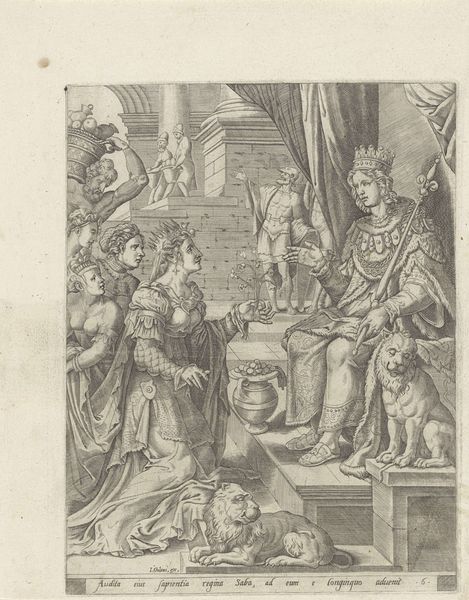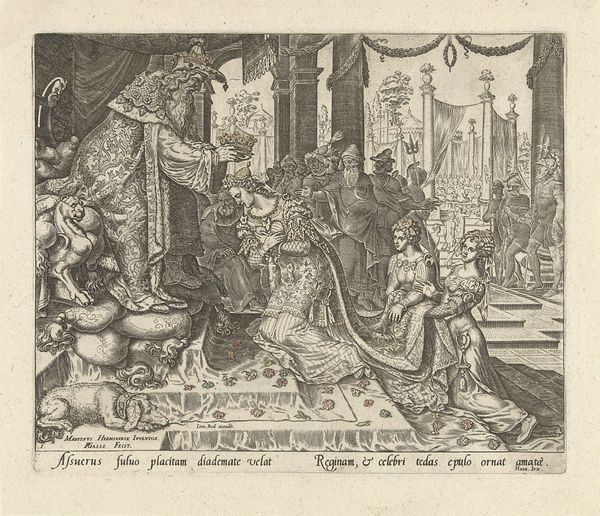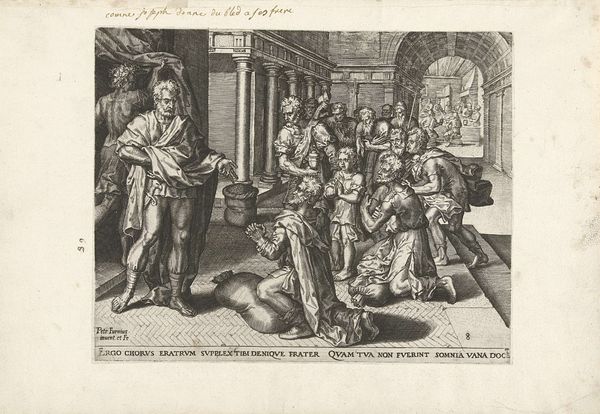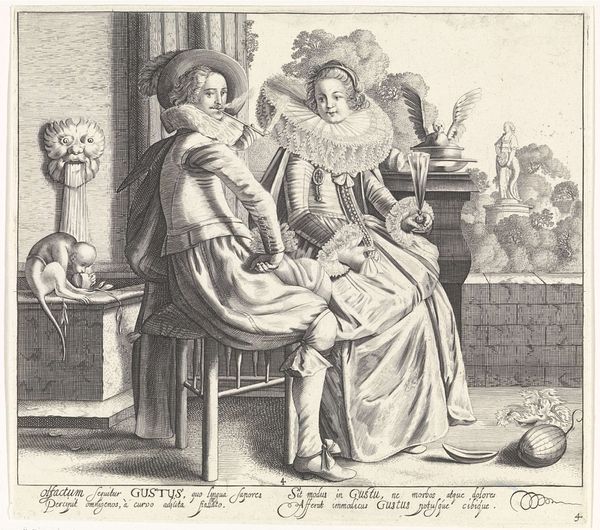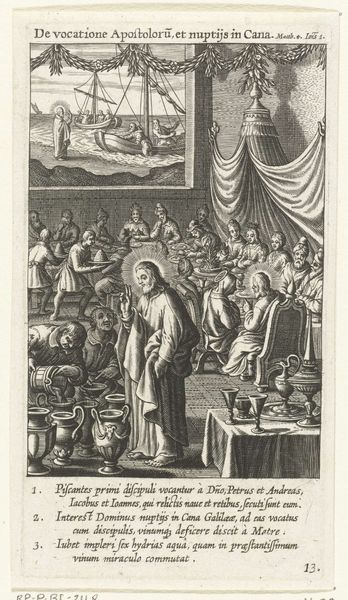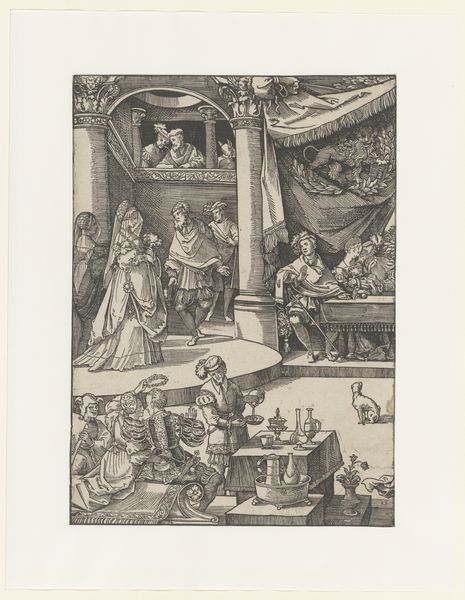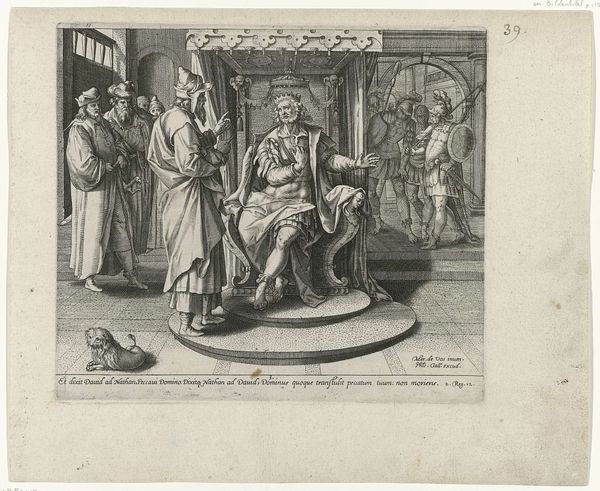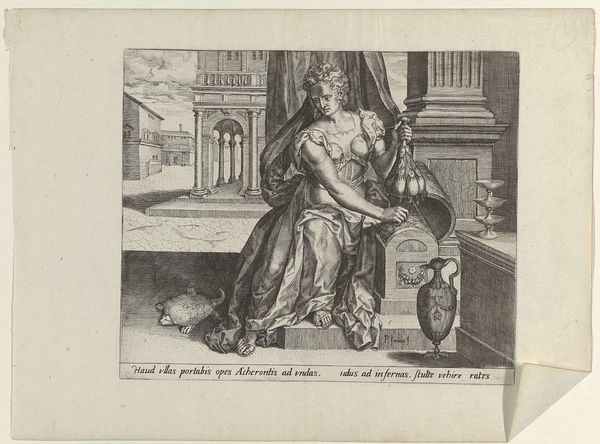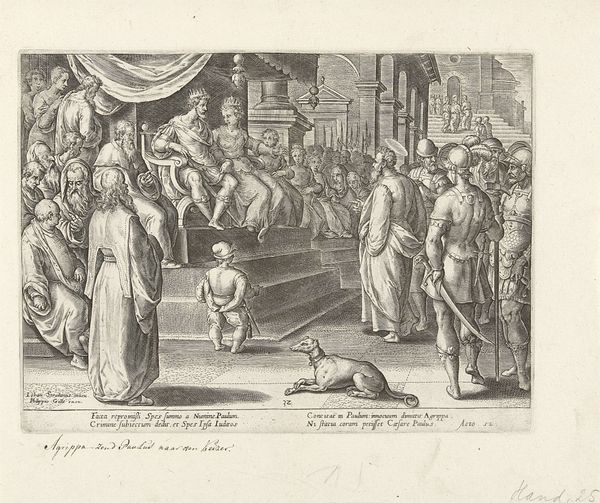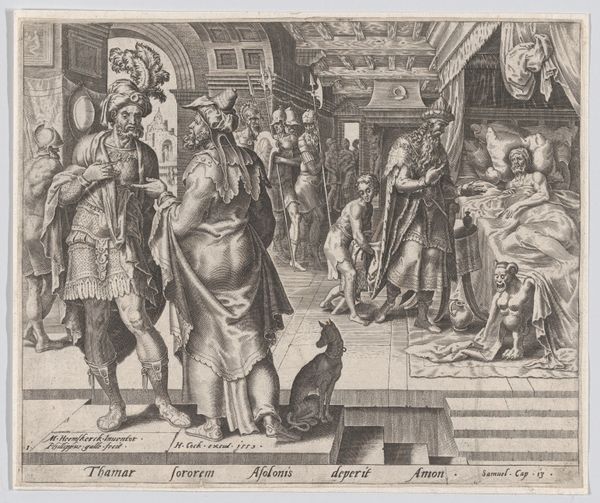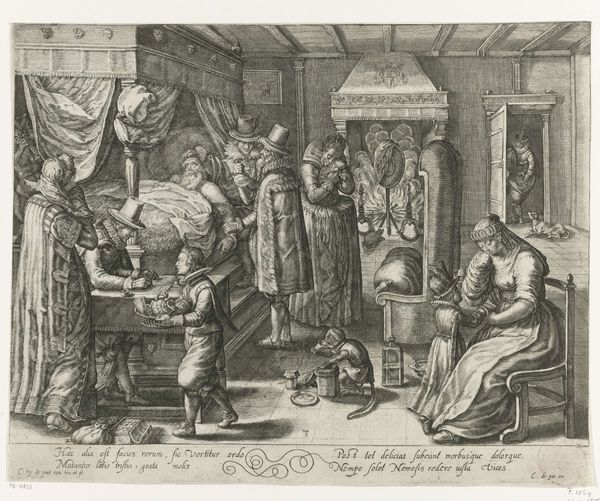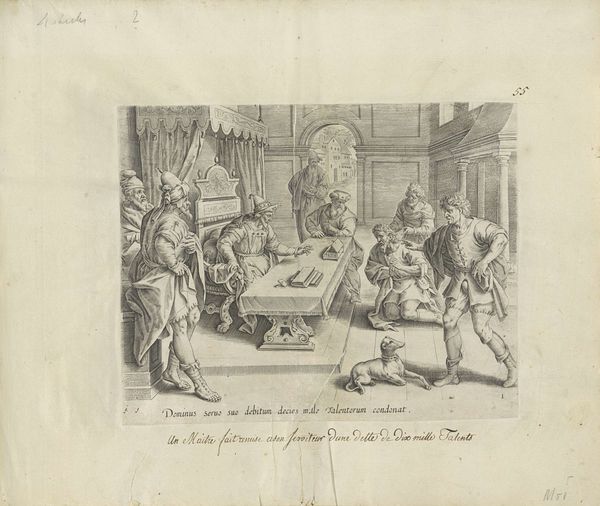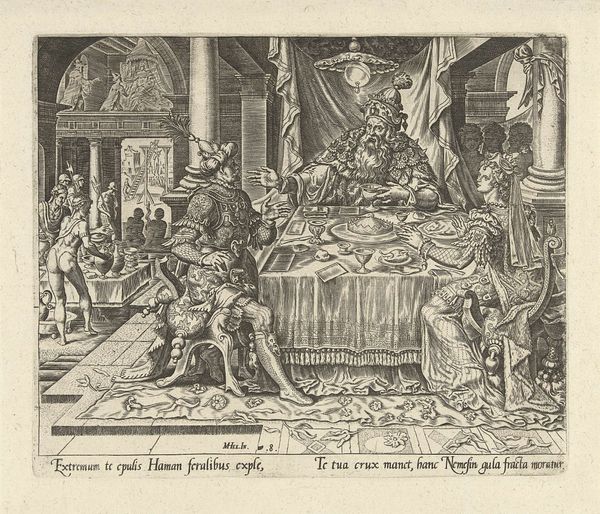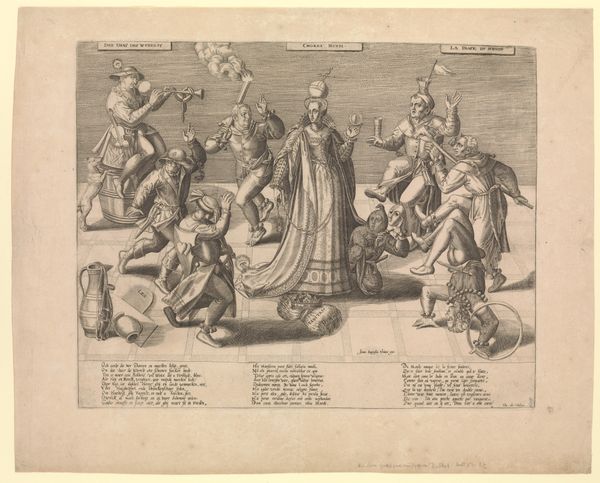
print, engraving
#
portrait
#
baroque
# print
#
old engraving style
#
traditional media
#
figuration
#
line
#
history-painting
#
engraving
Dimensions: height 180 mm, width 222 mm
Copyright: Rijks Museum: Open Domain
Editor: This is "Lodewijk XIII," an engraving done in 1611 by Crispijn van de Passe the Younger, currently housed at the Rijksmuseum. It's fascinating how such detail is captured in print form! It feels incredibly staged and regal, of course. What historical context do you see at play here? Curator: This engraving exists within a specific framework of early 17th-century European politics and image-making. Prints like these functioned as vital tools for disseminating royal imagery and solidifying power. Notice the inscription "CHRISTIANISSIMVS" – this title, "Most Christian King," was strategically employed by French monarchs. What elements draw your attention to the political implications of the image? Editor: Well, definitely the child king seated on what appears to be a throne. It's clearly emphasizing his authority. And then there's the battle scene in the background. Was this to connect him with military might, even at such a young age? Curator: Exactly. The combination of his youthful image with symbols of power, such as the crown, scepter, and the elaborate throne adorned with mythical creatures, created a deliberate message of assured succession and strength. The distant battle scene reinforced the idea of the monarch's role as protector and military leader. Think about the public role this print served, influencing perceptions of the king and the monarchy's legitimacy during a period of considerable religious and political upheaval. Editor: So it was carefully designed propaganda, in a sense? Curator: Indeed. This print exemplifies how art actively shaped and reinforced political ideologies, using readily disseminated imagery. What did you learn through analyzing the socio-political context of this work? Editor: It's given me a whole new appreciation for how prints could be potent political tools. I'll never look at royal portraiture the same way again. Curator: Exactly, understanding that context deepens our comprehension of the social function of early modern art.
Comments
No comments
Be the first to comment and join the conversation on the ultimate creative platform.
